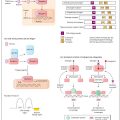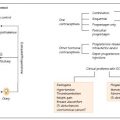
Table 49.1 Differences between primary hyperparathyroidism and hypercalcaemia of malignancy
| Primary hyperparathyroidism | Hypercalcaemia of malignancy | |
| Clinical state | Patients usually well, may be asymptomatic | Patients usually unwell with advanced malignancy |
| Serum calcium | Elevated | Elevated |
| Serum phosphate | Low | Normal |
| Serum parathyroid hormone | Elevated | Low |
| Treatment | Surgery | Fluids and bisphosphonate therapy |
A 55-year-old woman, Mrs CB, had a routine blood test at her general practitioners and was found to have a serum calcium level of 2.88 mmol/L. She was referred to the local endocrine clinic. She was completely asymptomatic, having none of the classical symptoms associated with hypercalcaemia such as bone pain, abdominal pains, renal colic, thirst, polyuria or tiredness. Further investigations confirmed a high serum calcium in association with a low serum phosphate, normal Vitamin D concentrations, a raised 24-hour urine calcium excretion and an elevated serum parathyroid hormone concentration. Sestamibi radioisotope scanning revealed a single abnormality in the upper right parathyroid gland and subsequent surgery confirmed the presence of a single parathyroid adenoma.
Calcium is essential for: bone growth, blood clotting, maintenance of the transmembrane potential, cell replication, stimulus–contraction and stimulus–secretion coupling, and the second messenger process.
Circulating and extracellular calcium
Stay updated, free articles. Join our Telegram channel

Full access? Get Clinical Tree







